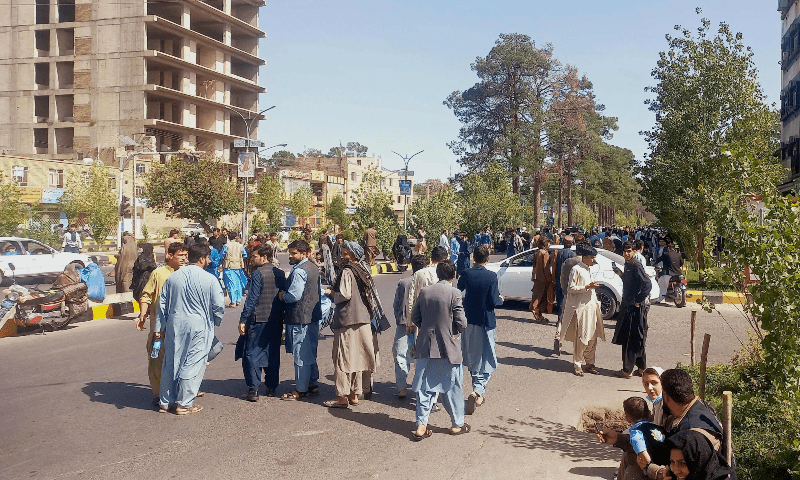The death toll could rise given reports of landslides and people trapped beneath collapsed structures after a magnitude 6.3 earthquake that rocked western Afghanistan on Saturday killed 14 people and injured 78 others.
According to the USGS, the epicenter of the earthquake was located 40 kilometers (25 miles) to the northwest of Herat, the major city in the area, and it was followed by seven aftershocks that had magnitudes ranging from 4.6 to 6.3.
Around 11:00 a.m. (0630 GMT), a series of long-lasting earthquakes struck the city, sending large numbers of people running from their homes.
“We were in our offices when the building started shaking suddenly,” said Bashir Ahmad, a 45-year-old resident of Herat, to AFP. “Wall plasters started to fall down and the walls got cracks, some walls and parts of the building collapsed.”
“Network connections are broken, therefore I cannot reach my relatives. It was awful, and I’m too terrified and anxious about it,” he added.
In the immediate aftermath of the first earthquake, women and children stood out on the wide streets, away from tall structures.
Mohammad Taleb Shahid, the province of Herat’s director of public health, told AFP that 14 people had died and 78 had been injured, but he expressed concern that the number might grow.
“These are the numbers that have been brought to the central hospital so far, but this is not the final figure,” he stated. “We have information that people are buried under rubble.”
According to a USGS early report, hundreds of fatalities were possible.
“Significant casualties are probably going to happen, and the calamity could spread widely. Past occurrences at this level of warning have called for a regional or national reaction,” it stated.
The initial earthquake’s magnitude was previously reported by USGS to be 6.2. It stated that the depth was only 14 kilometers.
Landslides have occurred in rural and hilly areas, according to Mullah Jan Sayeq, spokesman for the disaster management administration.
Herat, 120 kilometers east of the Iranian border, is regarded as Afghanistan’s cultural center.
It serves as the administrative center for the Herat Province, which according to 2019 World Bank data is home to 1.9 million people.
The Hindu Kush mountain region, which is close to the meeting point of the Eurasian and Indian tectonic plates, is particularly vulnerable to earthquakes that frequently strike the nation.
After a 5.9-magnitude earthquake slammed the poor region of Paktika in June of last year, it was the deadliest earthquake to hit Afghanistan in nearly 25 years, leaving more than 1,000 people dead and tens of thousands homeless.
A magnitude 6.5 earthquake that occurred in March of this year near Jurm in northern Afghanistan killed 13 persons in Afghanistan and Pakistan.
Since the Taliban took back power in 2021, there has been a widespread withdrawal of Western aid, which has left Afghanistan in the grip of a dire humanitarian crisis.
I am a dedicated student currently in my seventh semester, pursuing a degree in International Relations. Alongside my academic pursuits, I am actively engaged in the professional field as a content writer at the Rangeinn website.







